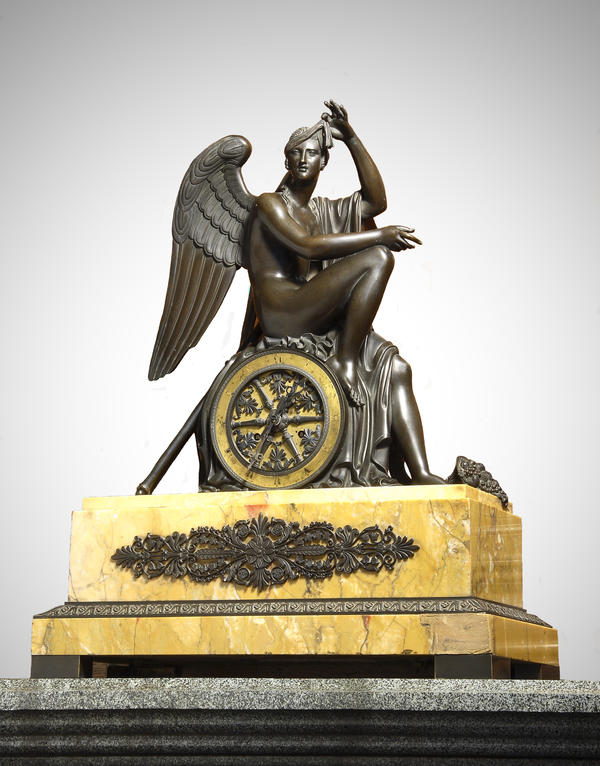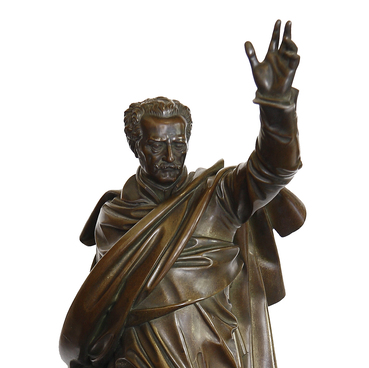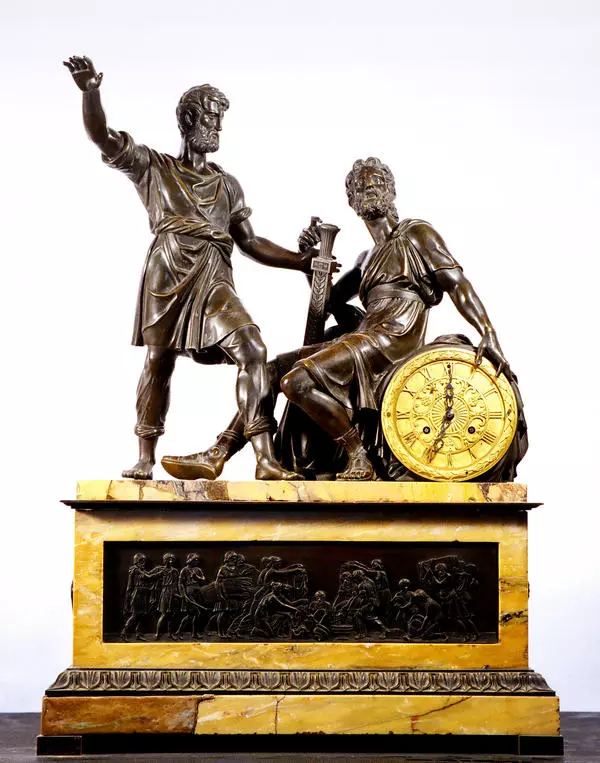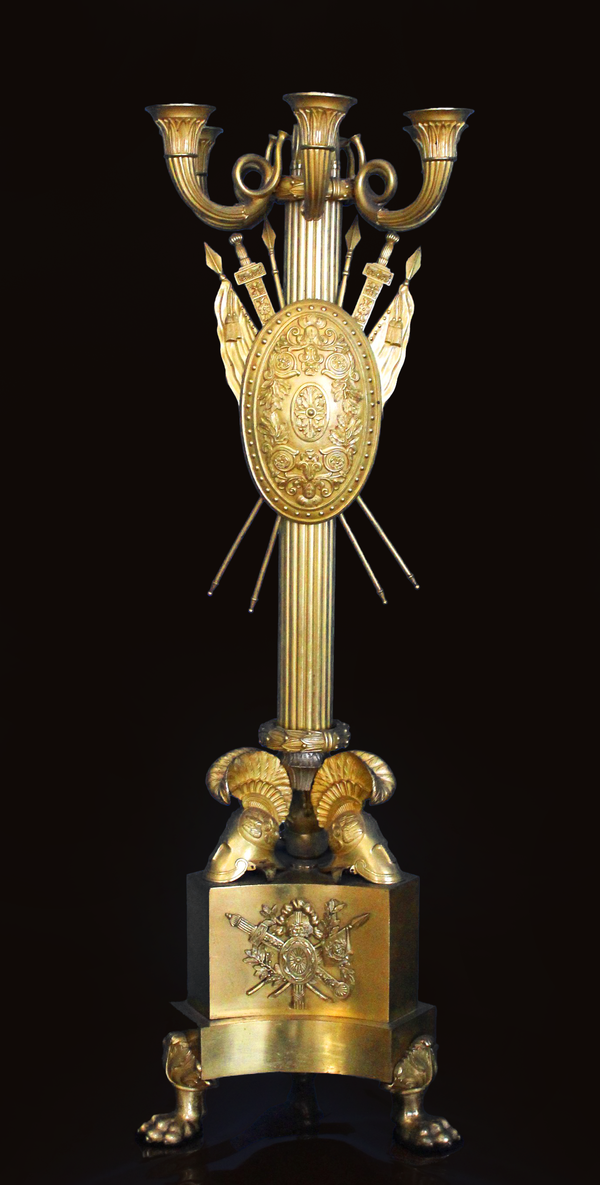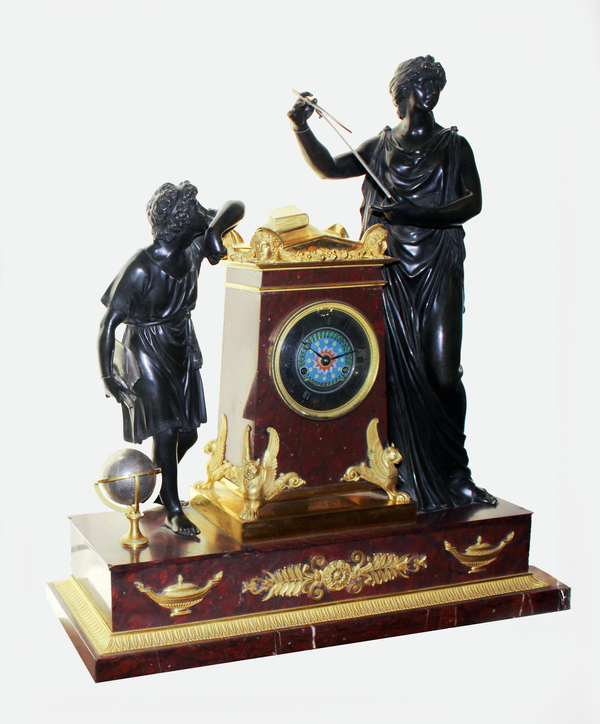Pierre-Philippe Tomir grew up in a family of hereditary bronzier. He studied sculpture at St. Luke 's Academy. His teachers were sculptors Goodon and Paju. At the age of 21, a gifted pupil received a gold medal from the academy.
After setting up his own firm, Tomir performed a series of works commissioned by his teacher Goodon. Among them are two reduced copies from bronze sculpture ‘Voltaire.’ These sculptures Tomir sent as a gift to Catherine II. After that the number of orders from the Russian aristocracy increased. According to bronze researcher Weiner, the rare Russian aristocratic house could not boast of the works of French master Tomir.
In the 1780s Tomir started working full-time as a bronzier at the Sevra factory. At the same time, he becomes a court supplier. From this moment on Tomir had been known throughout Europe and had been supplying his works to the palaces of Italy, Spain and Holland.
In 1823, when the master was 72 years old, he left his position, but for the rest of his life controlled his company. After his death, the factory lasted until the late 1850s.
Clock ‘Fortune’ are a classic type of fireplace or cabinet clock. The clock consists of a rectangular base and a figure of a goddess of dark bronze.
Fortune is an antique goddess of luck, occasion, and instability, who gifted her chosen ones at random. In art, Fortune is usually depicted naked and winged, sometimes blindfolded. Often it is represented by standing on a ball or resting on it its main attribute - a wheel.
The figure of the goddess in Tomir 's work is sitting on a ship 's steering wheel. Mariners were always scared of the treachery of this goddess. The image of the ship 's steering wheel is a cue that wind can change. The figure of the goddess is surrounded by dossals. There is a horn of abundance at her feet which is a common attribute of Fortune. The cap is decorated with a plant ornament of dark bronze along the perimeter in the lower part and an applique on the front side.
In 1776 he received the title of master of bronze casting and gold casting and managed to establish his own production. In 1806, he became the first of the bronzier to be awarded a gold medal.
After setting up his own firm, Tomir performed a series of works commissioned by his teacher Goodon. Among them are two reduced copies from bronze sculpture ‘Voltaire.’ These sculptures Tomir sent as a gift to Catherine II. After that the number of orders from the Russian aristocracy increased. According to bronze researcher Weiner, the rare Russian aristocratic house could not boast of the works of French master Tomir.
In the 1780s Tomir started working full-time as a bronzier at the Sevra factory. At the same time, he becomes a court supplier. From this moment on Tomir had been known throughout Europe and had been supplying his works to the palaces of Italy, Spain and Holland.
In 1823, when the master was 72 years old, he left his position, but for the rest of his life controlled his company. After his death, the factory lasted until the late 1850s.
Clock ‘Fortune’ are a classic type of fireplace or cabinet clock. The clock consists of a rectangular base and a figure of a goddess of dark bronze.
Fortune is an antique goddess of luck, occasion, and instability, who gifted her chosen ones at random. In art, Fortune is usually depicted naked and winged, sometimes blindfolded. Often it is represented by standing on a ball or resting on it its main attribute - a wheel.
The figure of the goddess in Tomir 's work is sitting on a ship 's steering wheel. Mariners were always scared of the treachery of this goddess. The image of the ship 's steering wheel is a cue that wind can change. The figure of the goddess is surrounded by dossals. There is a horn of abundance at her feet which is a common attribute of Fortune. The cap is decorated with a plant ornament of dark bronze along the perimeter in the lower part and an applique on the front side.

